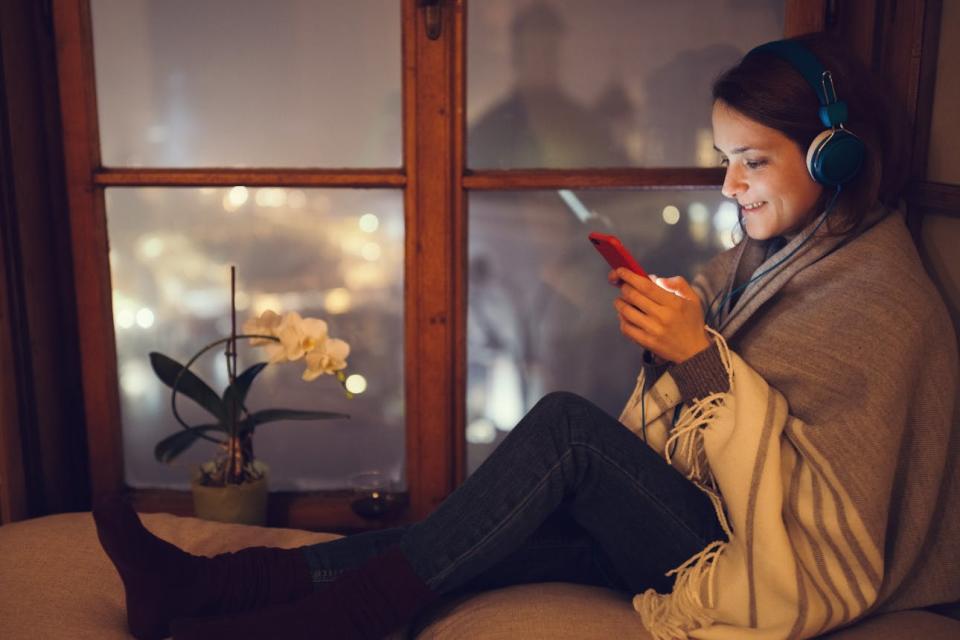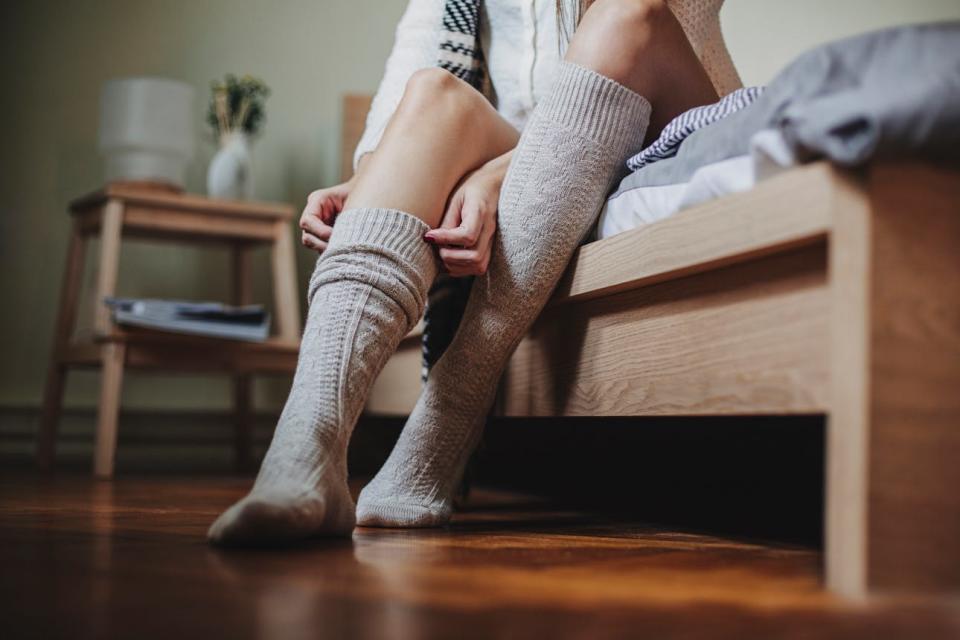5 Tricks You Can Pull on Your Brain to Fall Asleep Faster
Everybody knows sleep is essential, but sometimes actually getting there is easier said than done. Counting sheep has probably never actually cured a case of insomnia, so we looked into the research and talked to some experts to discover other tricks you can try when you’re struggling to drift off. Next time you find yourself staring at the ceiling, playing “how many hours until I have to get up,” give one of these a go instead. Soon it’ll be goodbye, sheep and hello, sleep.

1. Listen to classical music. A 2008 study published in the Journal of Advanced Nursing found that participants who listened to classical music for 45 minutes at bedtime for three weeks not only fell asleep faster than a control group, but they also experienced higher quality sleep and fewer disturbances. Dr. Michael Breus, PhD, a clinical psychologist who serves on the American Board of Sleep Medicine, explains that this could be because of how our brains respond to this type of music: “There is data that shows that while listening to classical music (specifically Baroque), your brain will produce alpha waves, a relaxing state of mind that often helps people fall asleep.”
Interestingly, the study found that participants who listened to audiobooks for the same amount of time saw no significant improvements. “When we listen to audiobooks we are likely to get immersed in the story, which might have a negative impact on sleep in two ways,” suggests Martin Reed, a sleep health expert and the founder of Insomnia Coach. “First, it keeps the mind active when it should be winding down. Second, we might continue listening past our normal bedtime just to find out what happens next.” Save the book for your commute and instead ride those alpha waves to the Land of Nod.
2. Write a to-do list. If you don’t have 45 minutes to soak up symphonies before bed, this trick takes just five. A 2018 study from the Journal of Experimental Psychology found that participants who spent five minutes before bed writing a list of tasks they had to do the next day fell asleep faster than people who instead wrote about things they’d done earlier. “When we lie in bed, it’s all too easy to start thinking about everything we need to do tomorrow,” Reed explains, “which makes it harder for the mind to rest and prepare for sleep. Writing a to-do list effectively addresses all these thoughts before you get into bed so they can’t interrupt your rest.”
That said, there are some things you don’t want to dwell on when you’re trying to find that calm state. Ginger Houghton, therapist, licensed social worker, and owner of Bright Spot Counseling, says, “This trick helps our brain release some of those thoughts and worries so we can stop catastrophizing — but beware of spending a long time on your tablet or smartphone before bed, and keep away from heavy emotional content like a breakup or bills, which could make it more difficult to sleep.” In other words, you’re better off sticking to the boring stuff than the stuff of nightmares.

3. Wear socks. Okay, this one involves your feet rather than your brain — but the science behind it is fascinating! A study published about 20 years ago in the journal Nature found that the more dilated the veins in your hands and feet are right before you go to bed, the more heat you lose through them, which lowers your core temperature, which signals to your body that it’s time to go to sleep. (We told you it was neat.) And how do you dilate those veins? By warming up your hands and feet. The study actually recommended snuggling your toes against a hot water bottle, but if that sounds a little too toasty, try a pair of woolly socks instead. Turns out that your ever-growing collection of cozy socks and slippers is now scientifically justified.
4. Picture your happy place. When you’re stuck sleepless in bed, take your brain somewhere peaceful. A study published in 2002 in Behaviour Research and Therapy found that insomniacs who pictured scenarios they found interesting and relaxing fell asleep quicker and had fewer distressing thoughts before falling asleep than insomniacs who used no form of distraction or weren’t told to use images. Choosing something specifically positive rather than generic is also important, Houghton says: “It’s far more relaxing to sink into one of our favorite memories than to conjure up jumping sheep.” She also encourages, “This trick works better the more you practice it.”
Blanking on what to think about? Dr. Nate Watson, MD, a practicing sleep physician and Professor of Neurology at the University of Washington, recommends using the fun parts of your waking life for inspiration. “Everybody should have a hobby or activity they enjoy that they can ponder as they fall asleep. Consider sleep a safe zone from the rigors of daily life. In that moment nobody is asking anything of you, so just enjoy it.” Think of it as taking a nightly vacation, without the hassle of packing.
5. Get up. It sounds counterintuitive, but if you’re spending hours lying in bed without sleeping, you risk making your insomnia worse in the long term. “We want to associate bed with sleep, not being awake,” Reed cautions. “Getting out of bed when you can’t sleep weakens the association between your bed and wakefulness.” Even trying to sleep actually makes it harder. “Remember sleep is something that happens, not something you do,” says Watson. Both Reed and Watson recommend that if you haven’t managed to get to sleep after about 30 minutes, you should get out of bed and do something else. “Estimate that half-hour period,” adds Reed. “Clock-watching during the night can lead to anxiety — and that is not going to help you sleep!”
Once you’re up, where should you go and what should you do? “I recommend that clients who frequently have trouble sleeping build a cozy nest,” says Houghton. “Think about your favorite chair, or your sofa, with a great blanket. The goal is not to sleep in the nest but to be comfortable for 20 to 30 minutes, and to do an activity that doesn’t require a lot of effort. Read a magazine, watch one funny or relaxing show — do not binge an entire season — or read a chapter or two of a book. Return to your bed just when you start to feel sleepy.” This is good for more than one-off cases, Houghton assures us: “You can break the pattern of not sleeping within about two weeks if you make a consistent effort to leave your bed instead of tossing and turning.” (TBH you had us at cozy nest.)
Got your own favorite way to beat insomnia? Share it with us @BritandCo.
(Photos via Getty)


